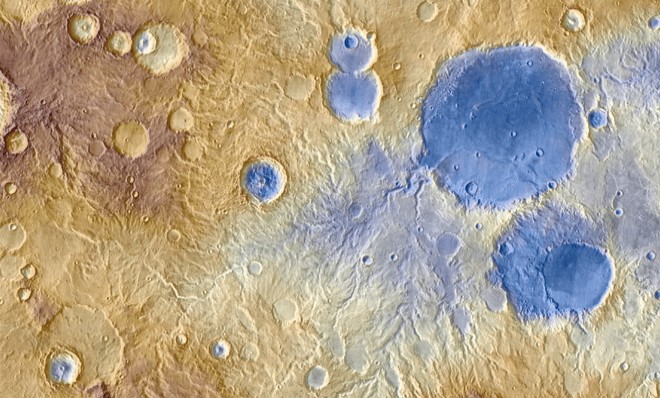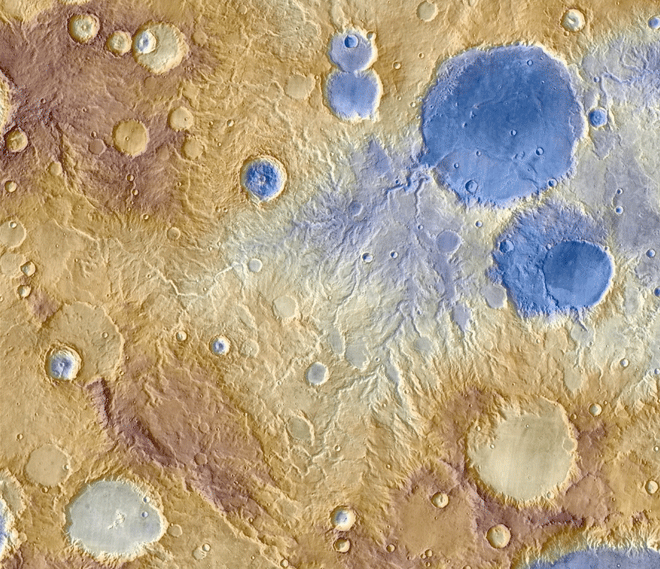Photographic evidence that it once snowed on Mars
Martian snowball fights, anyone?


(Image credit: NASA)
We tend to think of Mars as dusty, dry, and barren, but vein-like rivets carved throughout the Red Planet's surface suggest the world was once flowing with water. But where exactly that possibly life-bearing liquid came from — rainclouds? underground? — has been a matter of contention among scientists.
But a new study by Kat Scanlon, a geological sciences graduate student at Brown University, takes a close look at the orographic composition of Mars' surface. (Orography is the study of how mountains form.) According to the findings, it looks like the Red Planet's water-carved recesses were sleekly etched into its rocky surface by melting snow or rain.
The Week
Escape your echo chamber. Get the facts behind the news, plus analysis from multiple perspectives.

Sign up for The Week's Free Newsletters
From our morning news briefing to a weekly Good News Newsletter, get the best of The Week delivered directly to your inbox.
From our morning news briefing to a weekly Good News Newsletter, get the best of The Week delivered directly to your inbox.
For evidence, researchers looked toward orographic patterns here on Earth that aren't very alien at all. Namely, Scanlon was inspired by the tropical, sun-soaked big island of Hawaii:
[Hawaii] is home to a quintessential orographic pattern. Moist tropical winds from the east are pushed upward when they hit the mountains of Hawaii's big island. The winds lack the kinetic energy to reach the mountain summit, so they dump their moisture on the eastern side of the island, making parts of it a tropical jungle. The western side, in contrast, is nearly a desert because it sits in a rain shadow cast by the mountain peak. [Brown University]
By comparing this pattern — dry on one side of a mountain peak, wet on the other — to four different mountainous regions on Mars' surface, the research team noted remarkable orographic similarities. Computer model simulations suggest that a similar combination of winds, precipitation, and moisture dumps were once part of the martian climate billions of years ago.
But if Mars' surface possesses similar orographic patterns to a warm paradise like Hawaii...how did the researchers come up with snow? According to Discovery News, the wind model used in the computer simulation suggested a "cold climate at the time of the precipitation, hence the snow fall."
Meaning that once upon a time, one could have feasibly built a snow martian.
A free daily email with the biggest news stories of the day – and the best features from TheWeek.com
-
 Political cartoons for December 14
Political cartoons for December 14Cartoons Sunday's political cartoons include a new White House flag, Venezuela negotiations, and more
-
 Heavenly spectacle in the wilds of Canada
Heavenly spectacle in the wilds of CanadaThe Week Recommends ‘Mind-bending’ outpost for spotting animals – and the northern lights
-
 Facial recognition: a revolution in policing
Facial recognition: a revolution in policingTalking Point All 43 police forces in England and Wales are set to be granted access, with those against calling for increasing safeguards on the technology